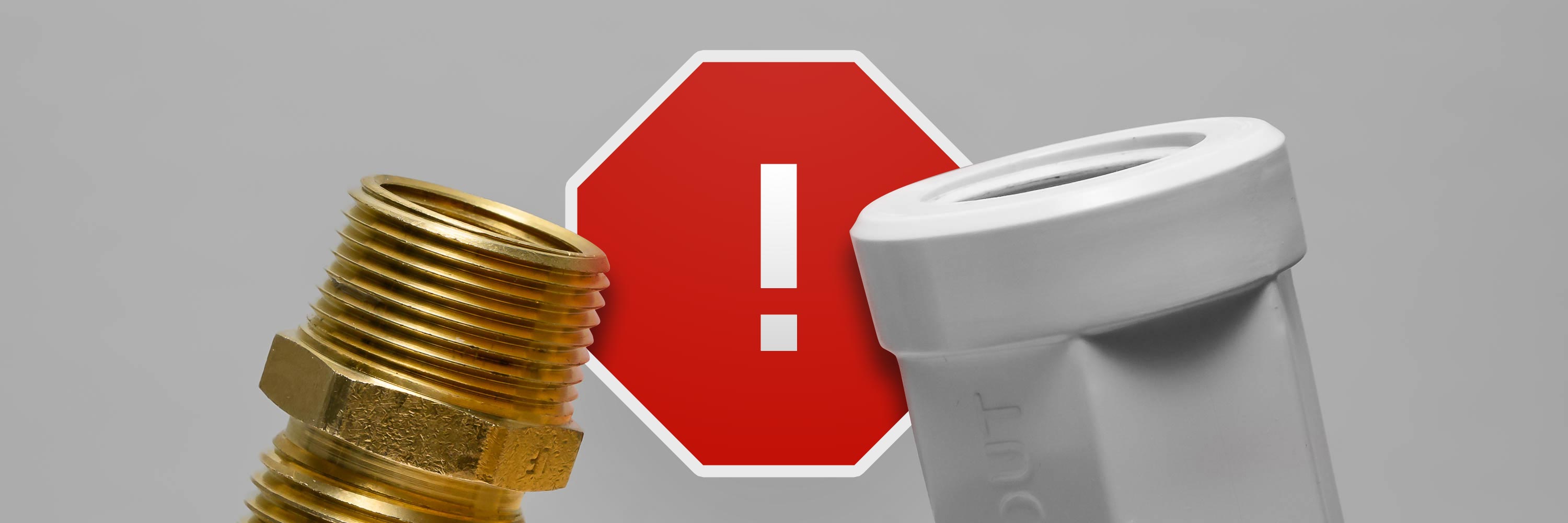
Why you shouldn't mix metal plumbing fittings with plastic threaded ports
When assembling fittings involving plastic and metal, it's crucial to ensure the male fitting is plastic, while the female fitting is made of metal. This setup allows for proper joining without risking damage or leakage.
The use of tapered threads like NPT results in the compression of the male fitting and stretching (tensile stress) of the female fitting while joining, progressively tightening the joint to create a secure, leak-resistant seal. As materials generally possess higher compressive strength compared to tensile strength, over-tightening can cause the female fitting to crack. Therefore, the female fitting must be stronger than the male fitting.
Particularly with plastics like PVC, which are prone to stretching more than most metals, caution is essential. In the case of using a metal male fitting with PVC threaded ports, the hard metal threads won't compress, placing excessive strain on the female PVC, leading to stress cracks and leaks. For this reason, Vista Water Group does not support the use of metal fittings into our PVC VersaChecks. On the other hand, our hardcoat anodized aluminum VersaChecks have incredible tensile strength and can accept both metal and PVC fittings alike.
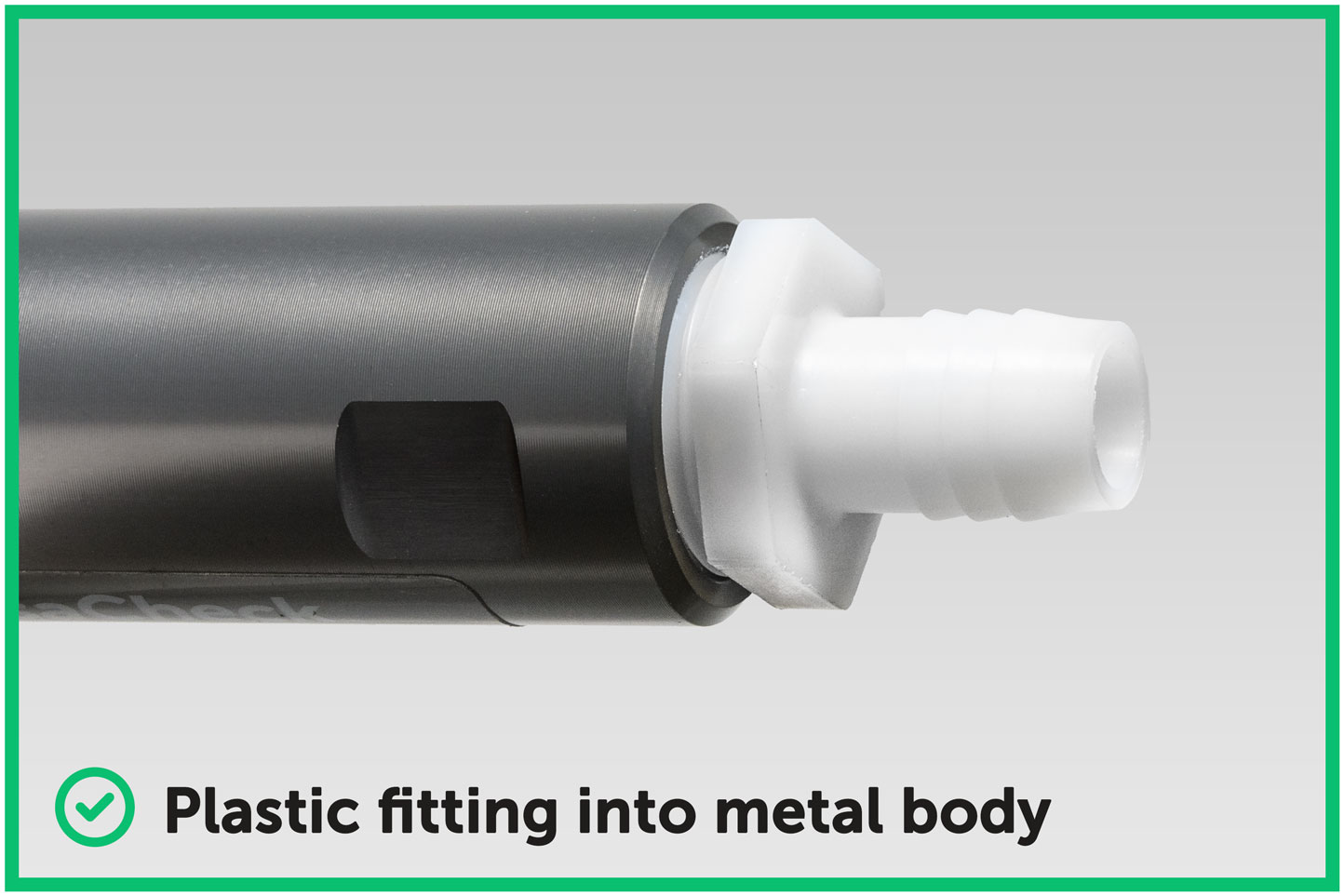
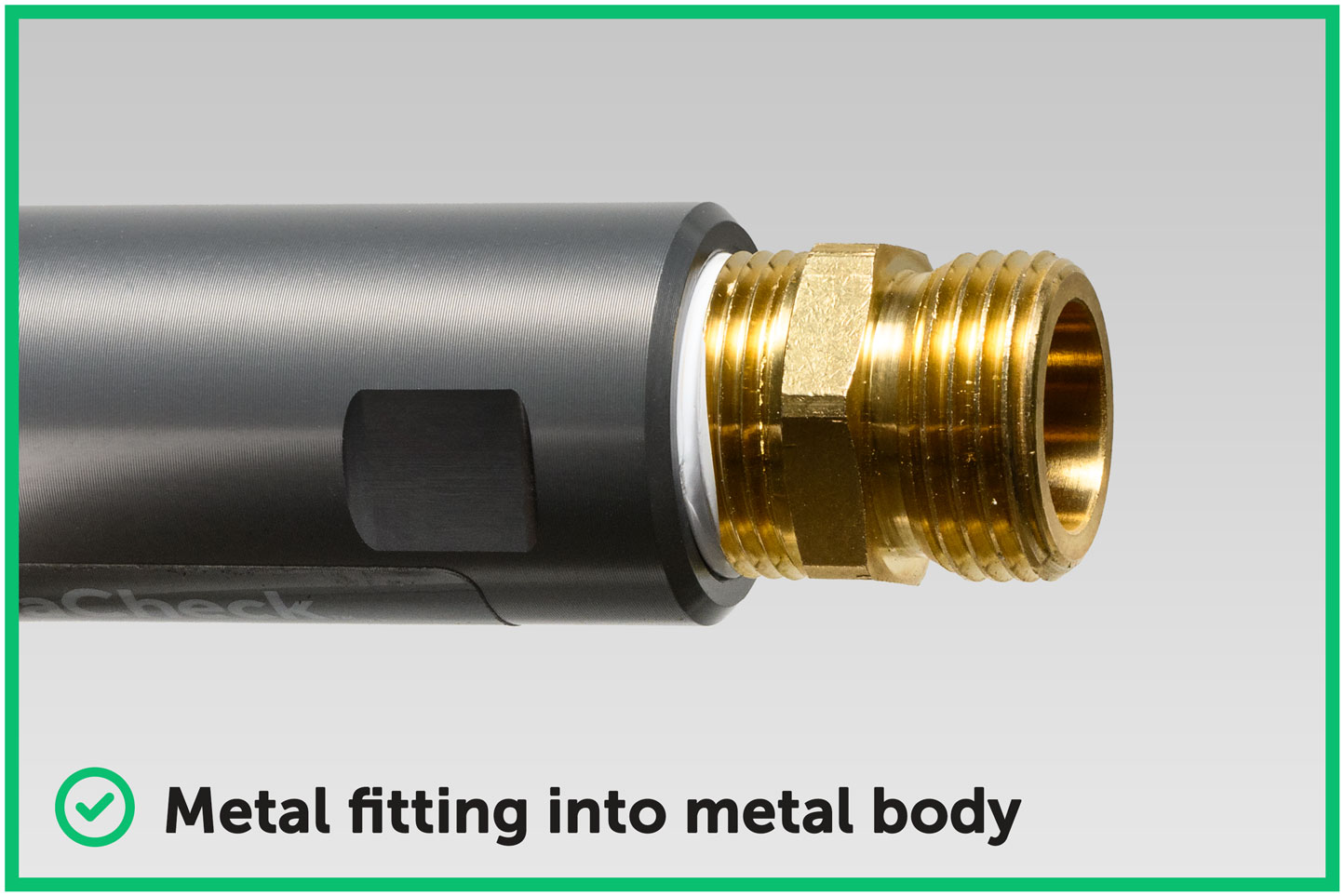
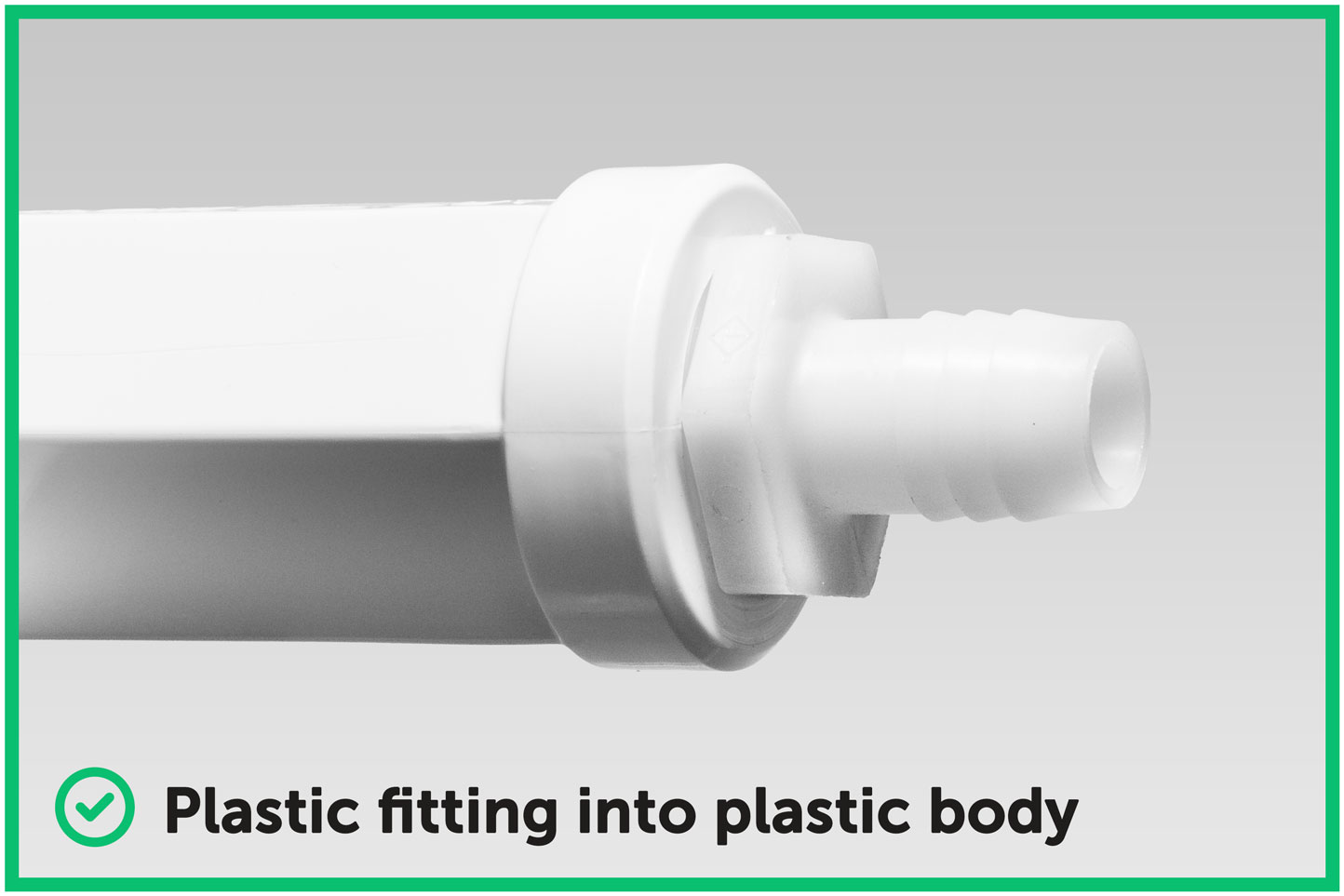
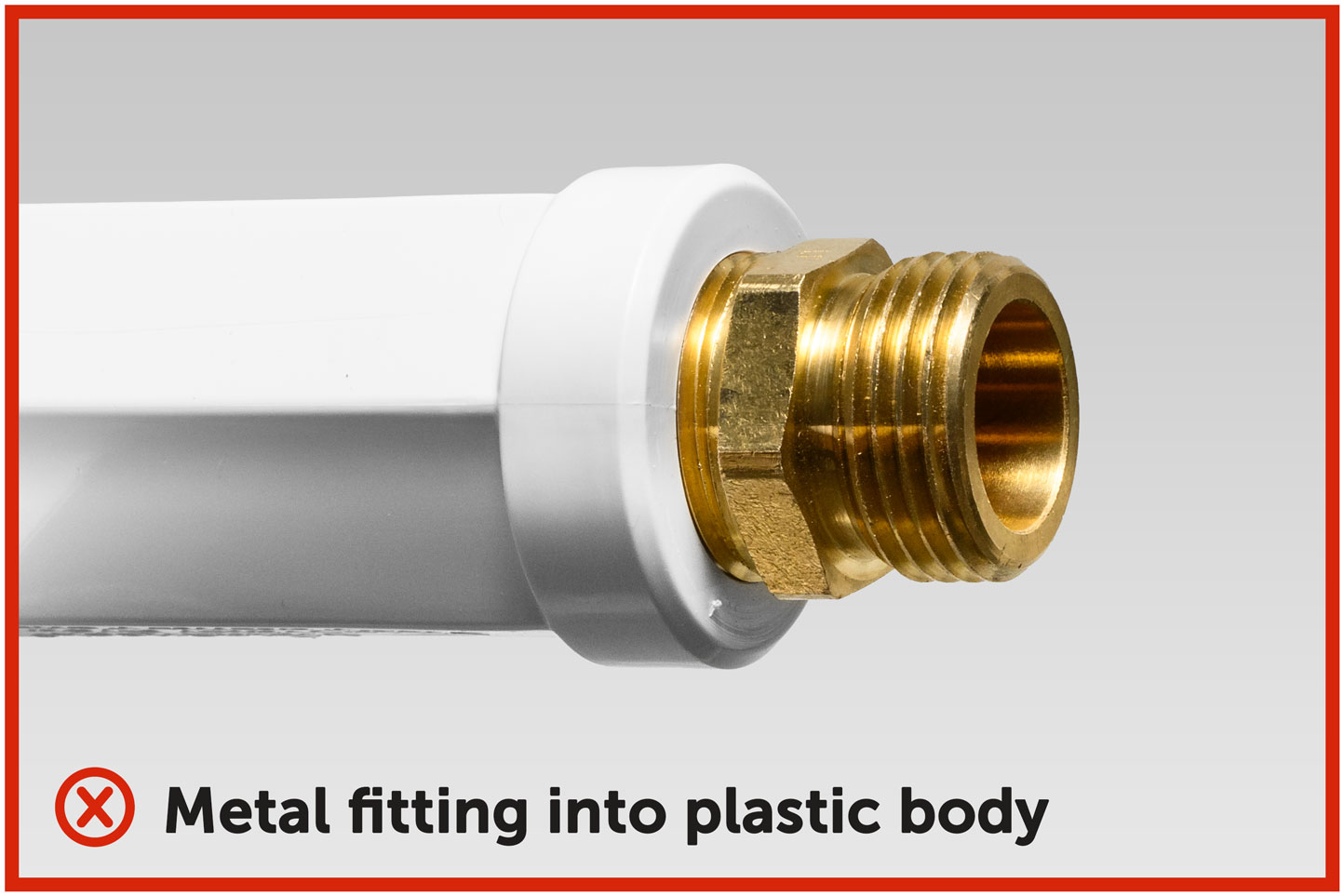
Regardless of materials chosen, proper NPT installation is essential for maintaining the integrity of the fittings and achieving a proper seal. The process is as follows:
- Inspect the threads of both the male and female components, ensuring they are free of contaminants, nicks, and burrs.
- Apply a small amount of liquid sealant or Teflon seal tape (1.5-2 turns), leaving the first couple threads uncovered to assist in the start of a proper threading.
- Screw the male fitting to finger-tight.
- Use a tool to tighten 1 full turn past finger-tight. Generally, smaller sized ports can withstand a tighter connection than a larger port.
Note: Never loosen a tightened fitting, as this can compromise the seal and lead to leakage.
